While some insects love to eat plants, there are also plants that “eat” insects.
Carnivorous or insectivorous plants are plants that are adapted to catching and digesting animals and insects as their food.
Usually, these carnivorous plants grow naturally in environments with low nutrients, that is why they need other sources, such as insects, for their growth.

How Carnivorous Plants Trap and Digest
Trapping mechanisms
Carnivorous plants catch their prey through trapping mechanisms. They have modified leaves designed to attract insects and animals.
These traps are either passive or active.
1. Pitfall traps
Pitfall traps are passive traps and are one of the most common carnivorous plant traps.
The plant has a hollow leaf with lid, and the leaf is filled with liquid where the prey is collected and digested.
2. Flypaper traps
Flypaper traps are either active or passive.
Like the flypapers we use in our homes, the plant has a sticky mucilage (thick and gluey substance) on the surface of its leaves or glands at the tip of hairs.
The prey is trapped in this sticky mucilage.
3. Snap traps
Snap traps are leaves designed to snap close and trap the prey. A famous example of this is the Venus Flytrap.
4. Bladder traps
Bladder traps actively suck in their prey by a partial vacuum.
5. Lobster-pot traps
Carnivorous plants with lobster-pot traps have downward-pointing hairs that force the prey deeper into their trap.
Digestion
Carnivorous plants digest their prey using bacteria or enzymes.
These bacteria and enzymes break down the insect or animal to get nutrients such as nitrogen compounds and salts.
These nutrients are then absorbed by the carnivorous plants, which is how they survive even in environments where there is low nutrition available, especially from the soil.
10 Carnivorous Plants
There are quite a few carnivorous plants identified and here is a list of 10 of those plants.
Venus Flytrap (Dionaea muscipula)
The Venus Flytrap is one of the most recognisable carnivorous plants.
It is native to the East Coast of the United States, in the subtropical wetlands of North Carolina and South Carolina.
This insectivore has snapping leaves that close to trap its prey.
Please visit our guides for more information on Venus Flytrap.


Jungle Pitcher Plant (Nepenthes rajah)
Nepenthes (tropical pitcher plants, monkey cups) is a genus of carnivorous plants.
The jungle pitcher plant is one of about 170 species of natural and cultivated hybrids of nepenthes.
N. rajah grows naturally in places of seeping groundwater that is permanently moist and with loose soil.
These carnivorous plants grow in hot and humid environments. They have leaves formed like a pitcher where they trap their prey.


Purple Pitcher Plant (Sarracenia purpurea)
Other names for the S. purpurea are northern pitcher plant, purple pitcher plant, side-saddle flower, and turtle socks.
The purple pitcher plant collects rainwater in its hollow leaf where prey falls and drowns.
Although S. purpurea is said to be inefficient at catching prey, many growers say that these plants have more success with catching prey during warm summer months.
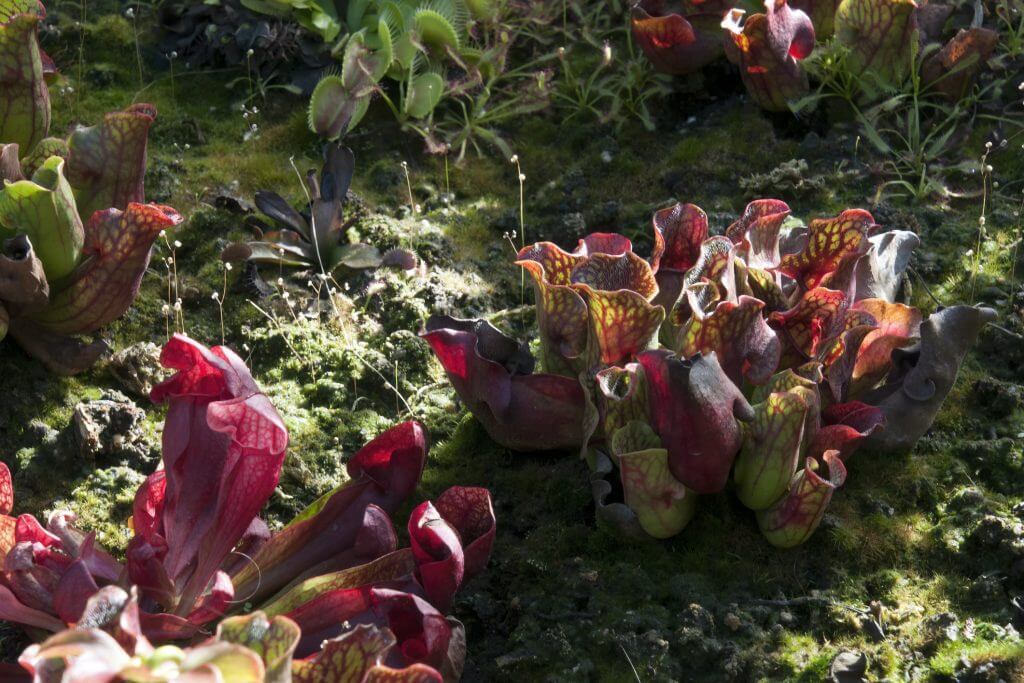

Fly Bush (Roridula gorgonias)
The fly bush, also known as Gorgon’s dewstick or fly catcher bush, is a carnivorous evergreen that grows upright up to about 3 feet (1 metre) tall.
R. gorgonias has awl-shaped leaves that crowd the tip of its branches. These tentacles have glands at their ends and secrete shiny and sticky resin where insects and other airborne things get stuck.


Cobra Lily (Darlingtonia californica)
The cobra lily, also known as California pitcher plant or cobra plant, is a carnivorous evergreen native to Northern California and Oregon in the United States.
This carnivorous plant is uncommon and grows in seeps and bogs with cold running water.
It got its name “cobra lily” from how its leaves look as if they are cobras that are ready to strike.
Unlike other pitcher plants, the cobra plant does not trap rainwater in its leaves or pitcher. Instead, it fills up its own pitcher with water by the water it has absorbed, which it then pumps up and releases from its roots.


Round-leaved sundew (Drosera rotundifolia)
Also known as common sundew, D. rotundifolia is a carnivorous plant that grows in marshes, bogs, and fens.
The leaves of the round-leaved sundew are arranged in a rosette. These leaves are covered with sugary mucilage that attracts insects. Its bright colour also contributes to its attractiveness to insects.
This carnivorous plant then digests these insects through enzymes.


Corkscrew Plant (Genlisea margaretae)
Genlisea margaretae is a perennial carnivorous herb in the genus Genlisea, native to Tanzania, Madagascar, and Zambia.
This carnivore does not get prey from the air like most other carnivorous plants. Instead, it catches prey from its highly-specialized subterranean leaves which traps their prey from the soil, typically protozoans.
This corkscrew plant developed its subterranean leaves in place of roots; that is why it does not have true roots.
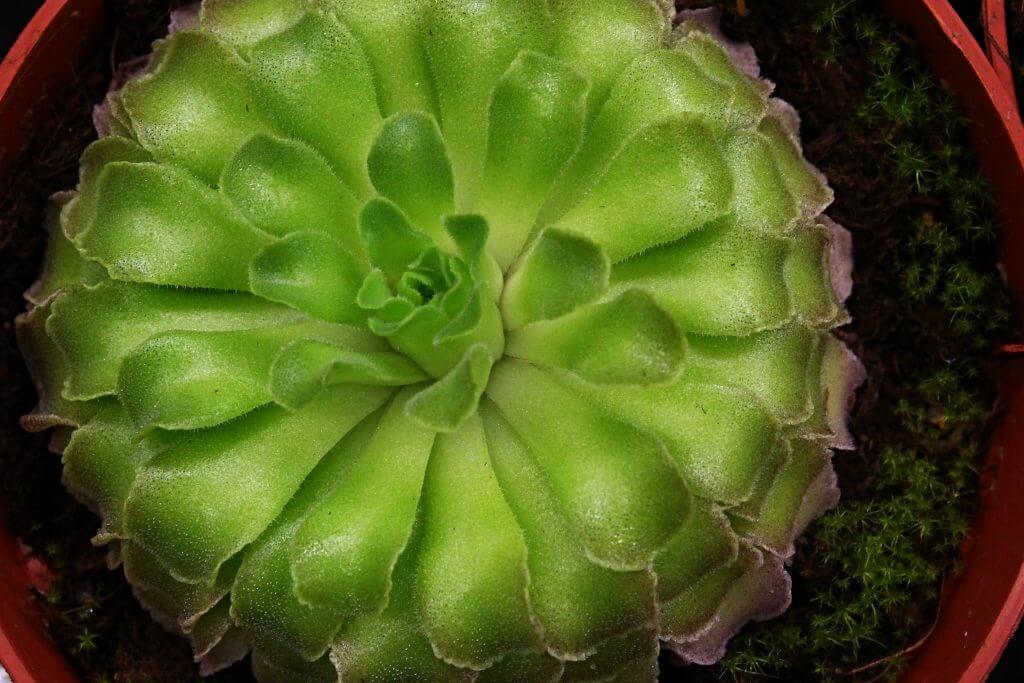

Common Bladderwort (Utricularia vulgaris)
Utriicularia vulgaris, also known as common bladderwort or greater bladderwort, is an aquatic carnivorous plant found in Europe and Asia.
The common bladderwort does not put down roots and free-floats on the water. Its leaves have many bladder-like traps to catch its prey.
The greater bladderwort can grow up to 3 feet (1 metre) high and die back in winter. It then forms a turion from which it will grow back again when the weather gets warmer.
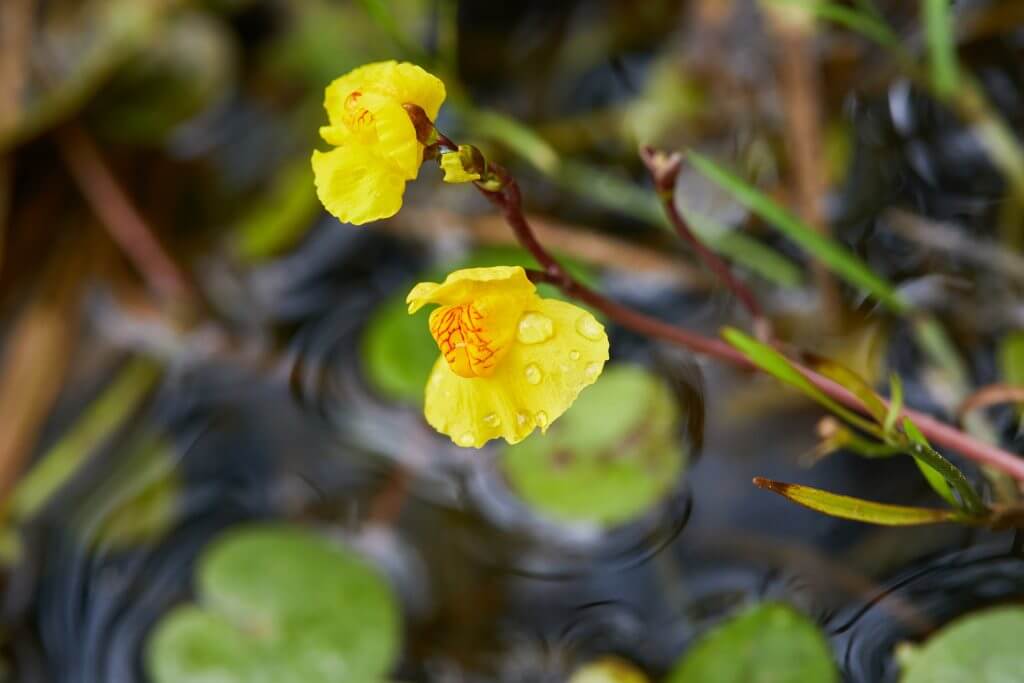

Western Australian Pitcher Plant (Cephalotus follicularis)
The Western Australian Pitcher Plant, also known as Australian pitcher plant, Albany pitcher plant, or fly-catcher plant, is a small carnivorous pitcher plant species of the genus Cephalotus.
Its pitcher has a spiked peristome (a feature that surrounds the opening) that will allow prey to enter but not escape.
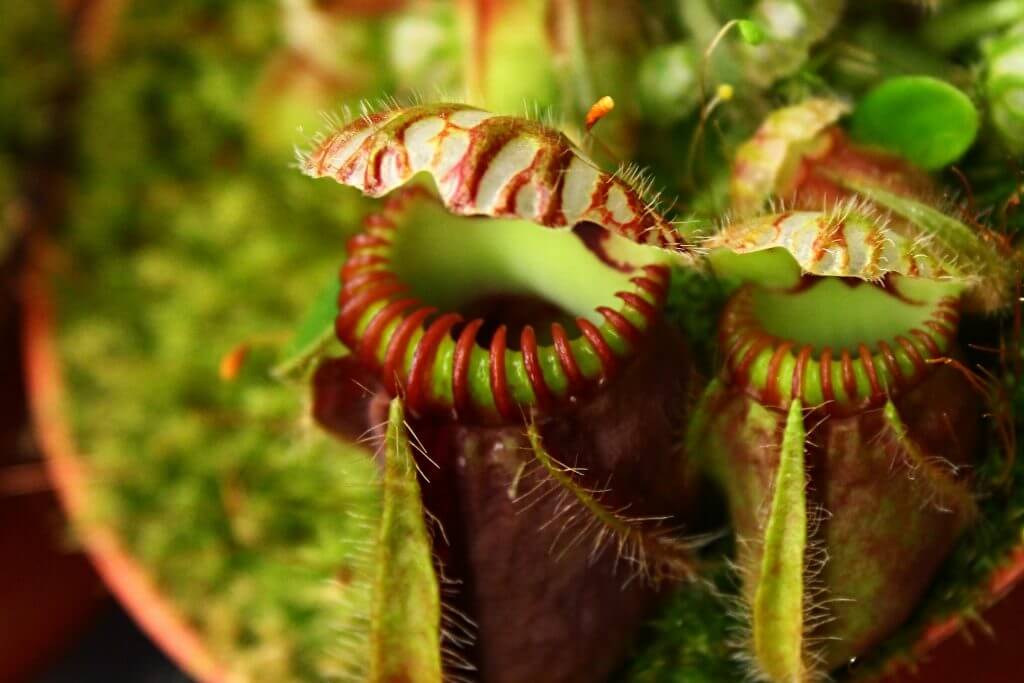

Cape Sundew (Drosera capensis)
This perennial carnivorous plant is native to South Africa.
The cape sundew has strap-like leaves covered with tentacles. These tentacles are bright-coloured and secrete sticky mucilage to trap its prey.
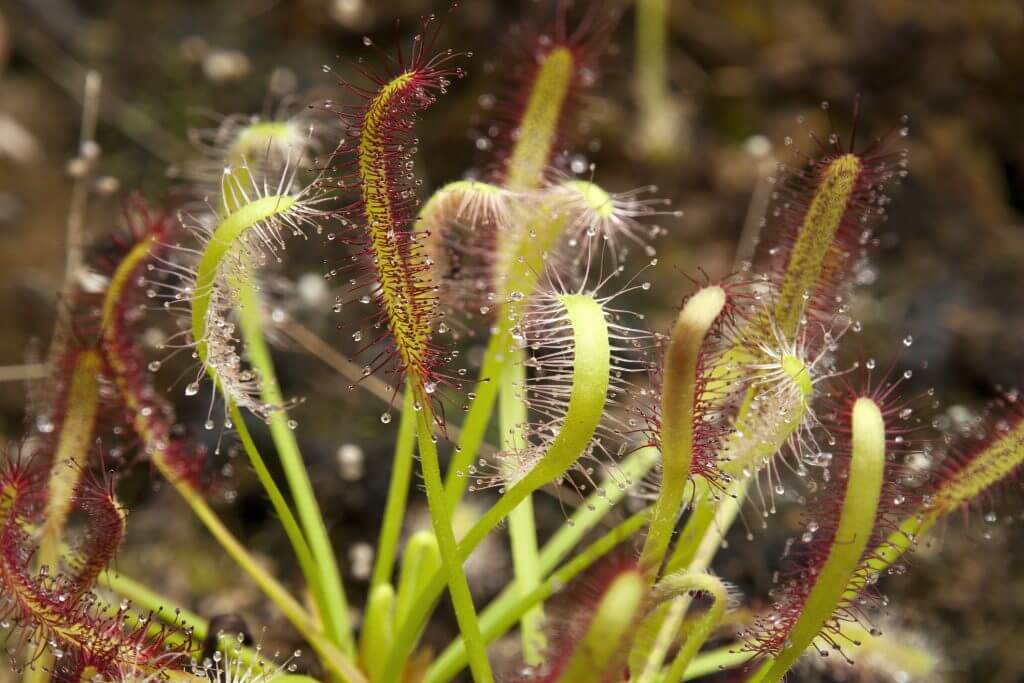

Planting Your Carnivorous Plants
There are thousands of carnivorous plants all over the world, and they require different growing conditions.
Ideal Climate for Carnivorous Plants
The most commonly grown carnivorous plants such as the Venus flytrap, pitcher plants, and other sundews prefer temperate climates.
There are also pitcher plant species that thrive in tropical conditions.
Carnivorous plants that prefer temperate climates need to experience a period of cold winter.
Full Sun and Moist Soil
Plant your carnivorous plants in boggy areas with full sun.
You can use moist compost or mix soil with peat.
Ideally, your carnivorous plant will prefer a low-nutrient medium.
Caring for Your Carnivorous Plants
Keep Them Moist
As carnivorous plants prefer boggy and wet soil, it is important to keep the soil damp at all times, especially in summer and warmer months.
Use Rainwater
Rainwater and water from natural sources are preferable as tap and filtered drinking water contain chemicals that may be poisonous to your carnivorous plant.
Sunny Position and Cold Winters
If you will keep your carnivorous plant indoors, make sure to place them in sunny positions such as windowsills. Take them out in winter or place in cooler places, around 45°F (7°C) to expose them to the colder temperature.
Do Not Feed Insects to Your Carnivorous Plants
You do not need to “feed” your carnivorous plants with insects.
Let them catch prey on their own, especially for those planted outdoors.
Even indoor carnivorous plants do not need assistance in getting prey.
Do Not Fertilise
Do not fertilise your carnivorous plants.
Like mentioned earlier, they prefer low-nutrient medium and too much nutrients could be poisonous to them.
Deadhead
Deadhead your carnivorous plants when necessary.
Use clean scissors to remove spent leaves, which usually happen around autumn and winter.
Never Tease Your Carnivorous Plants
Whatever you do, do not tease your carnivorous plant. It may be tempting to see your Venus flytrap shut its leaves, but each leaf will only close about five times in its lifetime.
So if you keep poking it and provoking it to close, the leaves may not be able to catch prey in the future.
Common Problems with Carnivorous Plants
Carnivorous plants are still susceptible to pests such as greenfly and spider mite.
You can use the appropriate insecticide to prevent and control these pests.
Improve air circulation if you keep your carnivorous plants in a greenhouse or indoors and increase humidity to prevent spider mite infestation.
[elementor-template id=”4604″]
[elementor-template id=”6387″]
